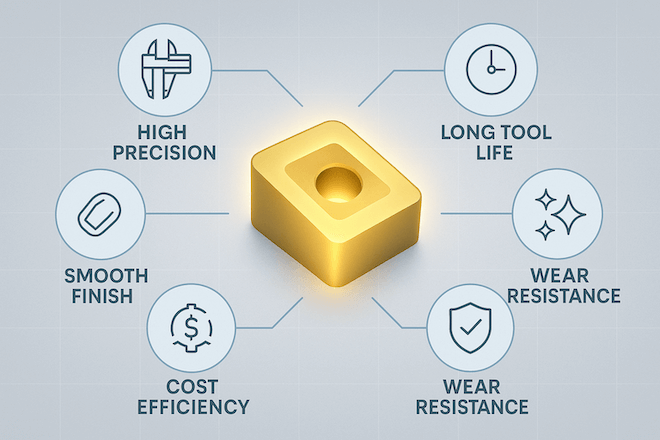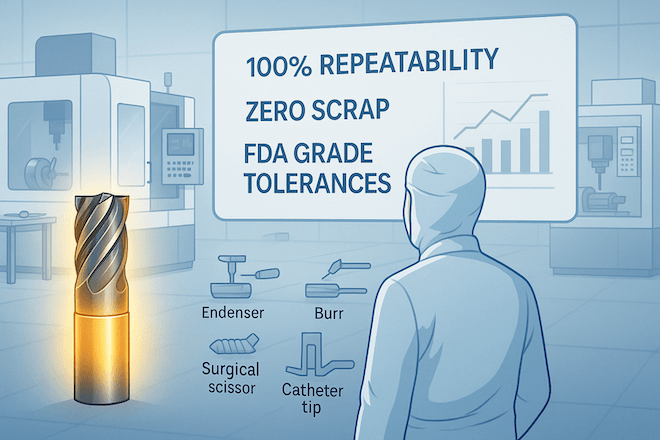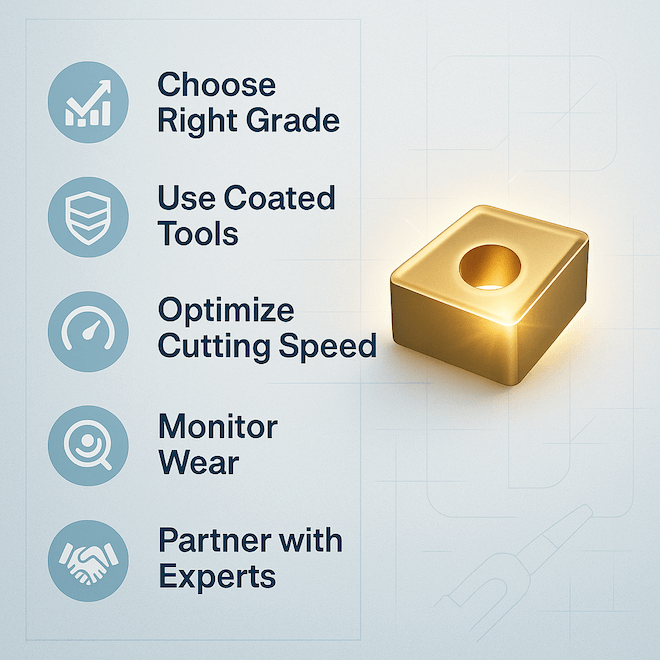Introduction
In the medical industry, precision and quality are essential. From surgical tools to implant components, every part must meet strict standards. To create these parts, manufacturers need cutting tools that are accurate, strong, and long-lasting. Tungsten carbide cutting tools are the top choice for this work.
This article explains why the medical industry relies on tungsten carbide tools and how they support high-quality production. It also gives useful tips for decision-makers looking to improve their manufacturing process with these tools.
Qu'est-ce que le carbure de tungstène ?

Tungsten carbide is a compound made from tungsten and carbon. It is very hard, even harder than steel. It also resists heat and wear. These properties make it ideal for cutting hard materials and keeping precision over time.
Many cutting tools are made from tungsten carbide, such as:
These tools are used in CNC machines and lathes to create complex medical parts.
Why Precision Is So Important in Medical Manufacturing

Medical parts must meet exact standards. Even a small error can lead to product failure or risk to patients. That’s why precision is critical when making:
Orthopedic implants (hip, knee, and spine parts)
Dental components
Instruments chirurgicaux
Catheters and diagnostic tools
Bone screws and plates
To make these parts, manufacturers use tungsten carbide tools because they maintain shape and accuracy even after many cuts.
Key Benefits of Tungsten Carbide Cutting Tools for the Medical Industry

1. High Precision
Carbide tools keep a sharp edge, which allows for tight tolerances. This is needed for delicate medical devices.
2. Long Tool Life
These tools last much longer than standard high-speed steel (HSS) tools. This reduces tool changes and saves time.
3. Smooth Surface Finish
A clean finish is important in medical tools to prevent bacteria and improve patient safety. Tungsten carbide gives smooth, polished results.
4. Heat and Wear Resistance
Medical-grade materials like titanium and stainless steel are hard to cut. Tungsten carbide can handle high temperatures and wear during these tasks.
5. Cost Efficiency
Although carbide tools cost more upfront, their longer life and better performance reduce costs in the long run.
Common Medical Parts Made with Tungsten Carbide Tools

Here are some examples of medical parts that are often machined using tungsten carbide tools:
| Medical Component | Matériel | Cutting Tool Used |
|---|---|---|
| Bone screws | Titane | Carbide drill & tap |
| Surgical scissors/blades | Acier inoxydable | Carbide grinding tools |
| Dental implants | Cobalt-chrome alloy | Carbide burs |
| Spine cages | PEEK/titanium | Fraises en carbure |
| Orthopedic pins | Titanium alloy | Alésoirs en carbure |
Why Medical Manufacturers Trust Tungsten Carbide

Many leaders in médical manufacturing choose tungsten carbide because it helps them meet strict regulations like ISO 13485 or FDA standards. These tools support:
Consistency in every production batch
Lower scrap rates
Faster production cycles
Greater part complexity with high accuracy
By choosing carbide tools, decision-makers ensure better product quality and fewer production delays.
Conseils pour choisir le bon outil en carbure de tungstène

Match Tool to Material
Different materials like titanium, PEEK, or stainless steel need different tool geometries and coatings.Select the Correct Coating
Use coatings like TiAlN or diamond to improve wear resistance and performance.Check Cutting Speed and Feed Rates
Use proper speeds to extend tool life and avoid heat damage.Monitor Tool Wear
Use digital sensors or manual checks to change tools at the right time.Partner with a Trusted Supplier
Work with experienced carbide tool makers like Retop for customized and reliable solutions.
Sustainability and Compliance in the Medical Field

Another reason to use carbide tools is their sustainability. These tools last longer, reduce waste, and can be recycled. For medical companies aiming to meet green goals or lower carbon footprints, carbide is a smart option.
Conclusion
Outils de coupe en carbure de tungstène are the best choice for producing medical parts with high precision and quality. They offer a long tool life, superior performance, and strong resistance to heat and wear. For decision-makers in the medical industry, choosing the right cutting tool can make a big difference in product quality, cost control, and compliance.
By working with reliable partners like Refaire and selecting the proper carbide tools, manufacturers can stay competitive and produce parts that meet the highest medical standards.
